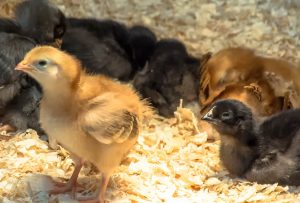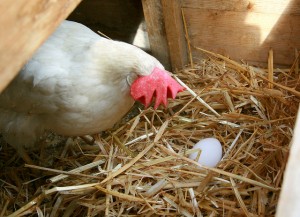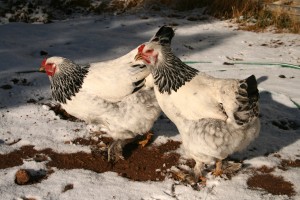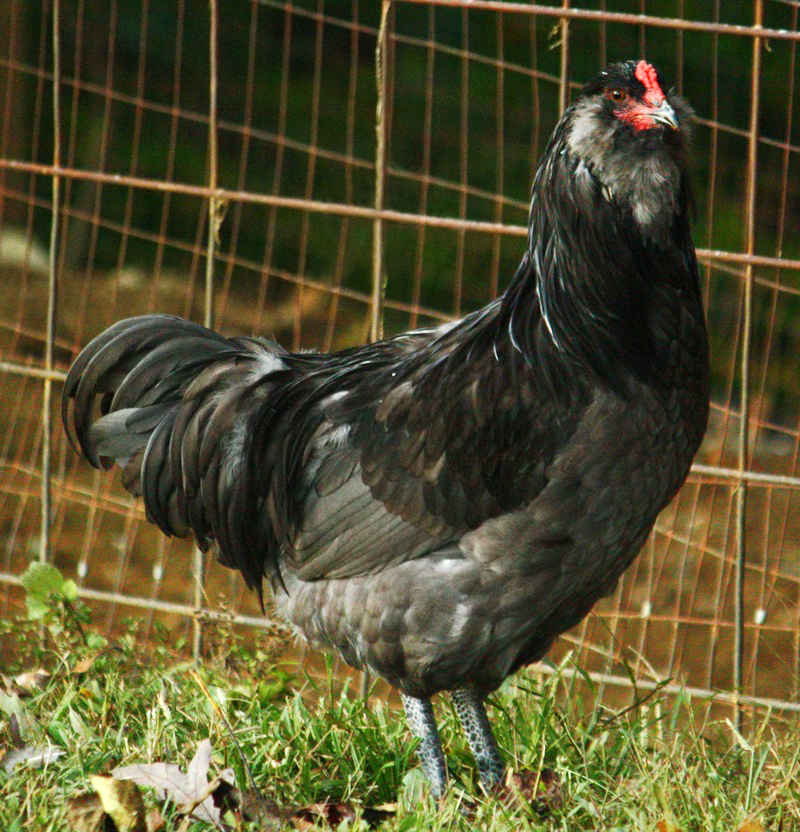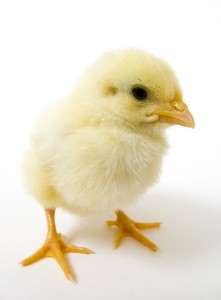Are you planning on getting chicks for Easter? I can always tell when Easter is close because feed stores start to fill up brooders in the stores with baby chicks.
Some people have mixed feelings about giving baby chicks for Easter gifts. I have always gotten baby chicks at Easter and have given my own children baby chicks as Easter presents. Easter falls right in the middle of spring and is one of the best times to get chicks because there are so many options available.
If you do plan on giving or getting chicks, make sure that you’re prepared to take care of them long after they grow out of the cute, fluffy stage.
Types of Chicks to Purchase
Once you’ve decided that you want to get chicks you’ll need to figure out what kind you want. Don’t be restricted by the breeds that are in your local feed store. Ordering chicks will allow you to purchase the breed you want and have it delivered to you!
Do you want chickens that are going to lay eggs every day? Or would you rather have chickens that lay colored eggs? Maybe, if you’re like me, you want chickens that are unique and pretty to look at.
Best Egg Layers
Wyandotte– Consistent layers that produce light cream- dark brown eggs.
Ancona– Excellent layers that lay white eggs.
Minorca– These red faced, black chickens lay large white eggs. They are a large breed.
Delaware– This older breed of chicken is a good egg layer. Hens are medium-sized and can lay large to jumbo sized eggs.
Speckled Sussex– This dual purpose chicken is known for its colorful plumage and ability to lay frequently. Hens lay lightly tinted eggs.
Colored Egg Layers
Ameraucana– Often referred to as ‘Easter Egg Chickens’, this breed lays blue, green and blue/green eggs. They are consistent layers.
Black Maran– Although Marans don’t lay blue or green eggs like the Ameraucana, they still lay beautiful eggs. The eggs are a rich, deep brown and are often speckled.
Unique Breeds
Brahma– These chickens are unique because of their size when they are grown. Brahma roosters can easily reach weights of 18 pounds and females can weigh in at 16 pounds. Despite their size, Brahmas are laid back and docile.
Cochins– Cochins are completely feathered, right down to their toes. Cochins are known for being extremely docile and make great pets for small children.
Crested and Polish– These chickens are adorable and have a crest. A crest is a collection of feathers on top of the head that makes it look like they are wearing a hat. These are chickens with big personalities!
Final Thoughts About Baby Chicks
Getting baby chicks is so exciting and rewarding! Make sure that you have all of your supplies when your chicks arrive (or before!). If you have everything that you need, choose a breed that will fit your needs and will fill your nesting boxes and yard with color.
Taking proper care of your chicks should prevent any illnesses from occurring. Keep the feeders filled with fresh, clean chick feed. Make sure that the chicks always have a clean source of water available. Keep the bedding clean and change it out as needed. Use a heat lamp to keep the brooder warm (95-100°F for the first two weeks, then decrease by 5°F each week until one month). Being prepared for your baby chicks will help ensure that everything goes smoothly and you raise happy, healthy chickens that you can enjoy for years to come.
Written by: Shelby DeVore
Shelby DeVore is a former high school agriculture teacher that has taught numerous agriculture classes and successfully coached multiple competitive FFA teams, including Tennessee FFA State Poultry teams. She’s an agricultural enthusiast and shares her love of all things farming with her husband and two children on their small farm in West Tennessee. She’s also the author of the blog Farminence, where she enjoys sharing her love of gardening, raising livestock and more simple living.

